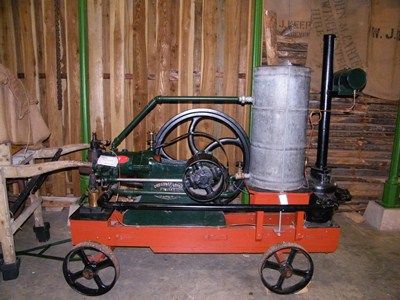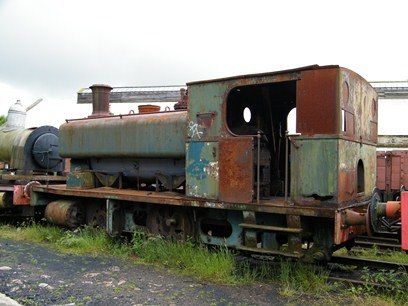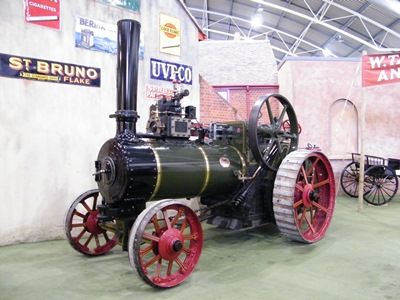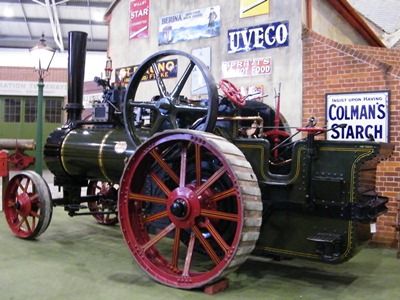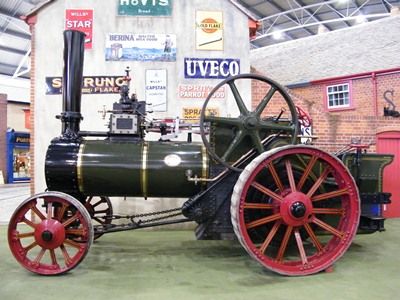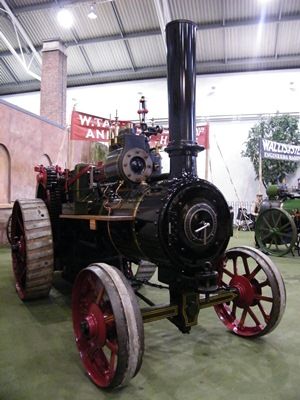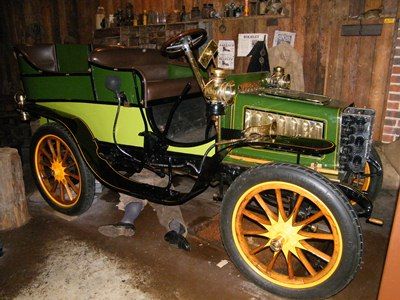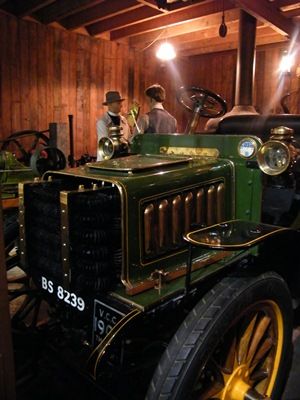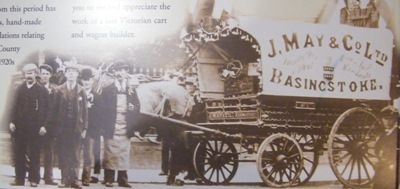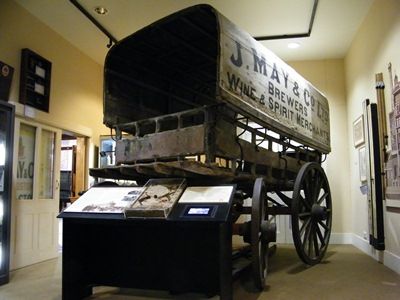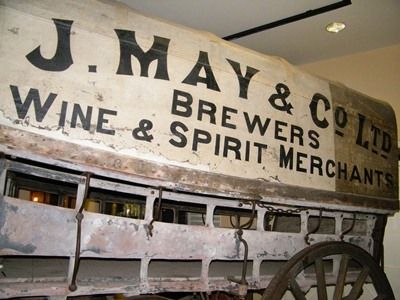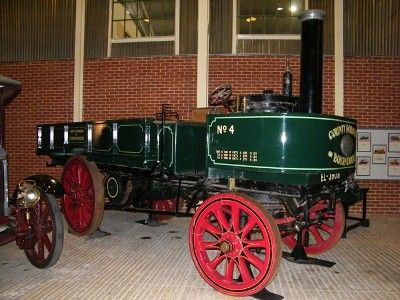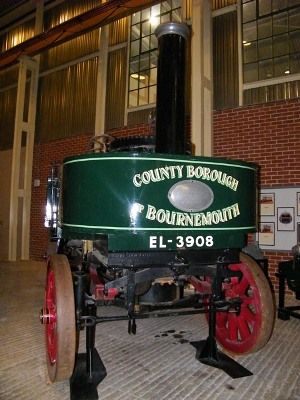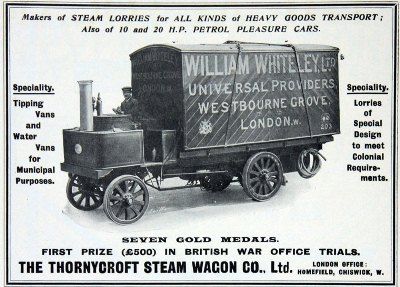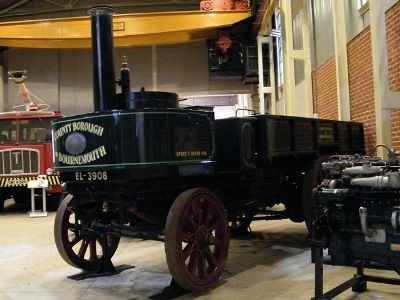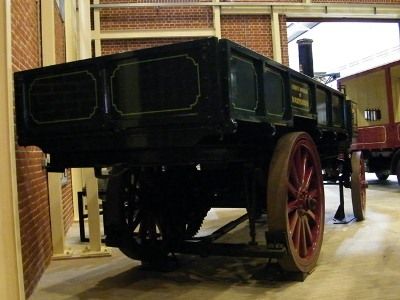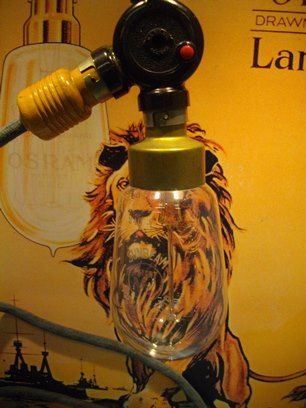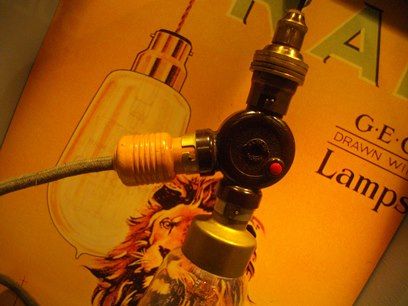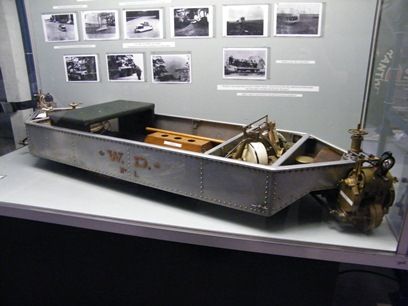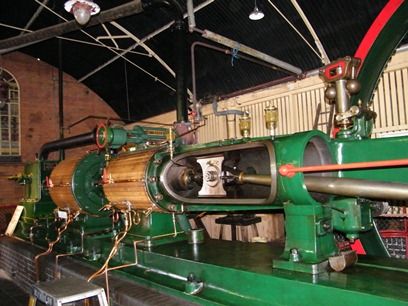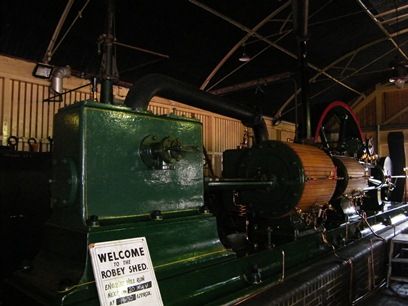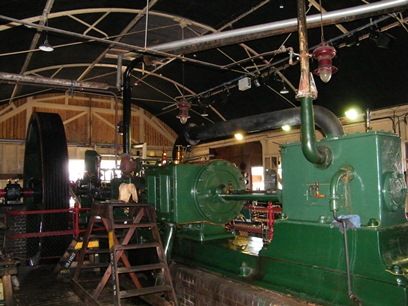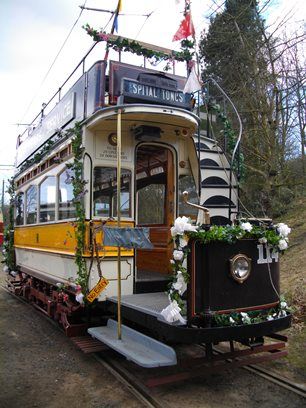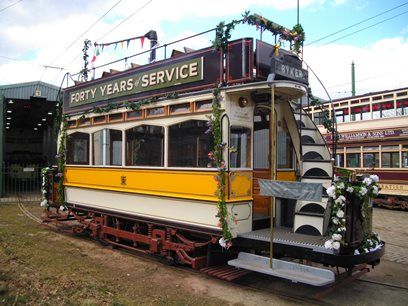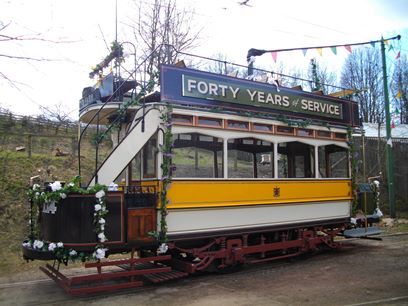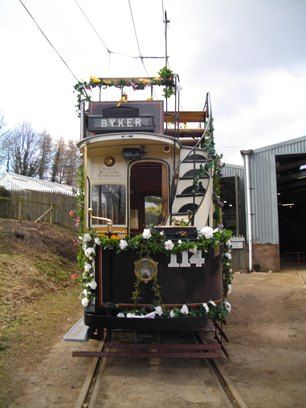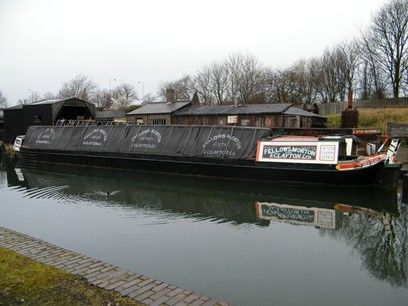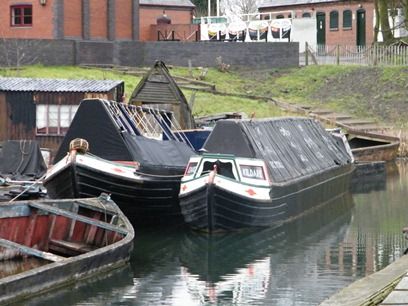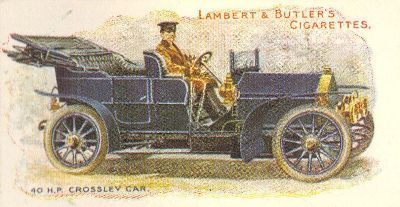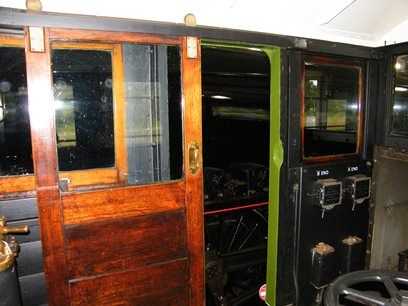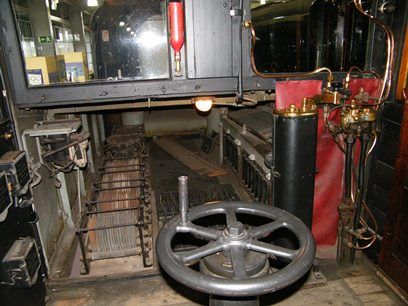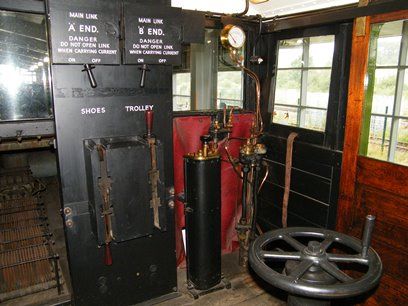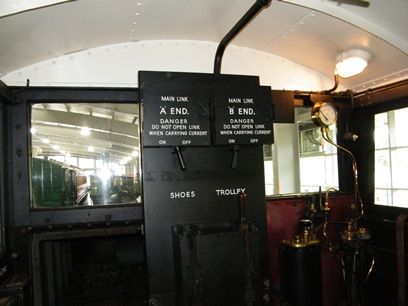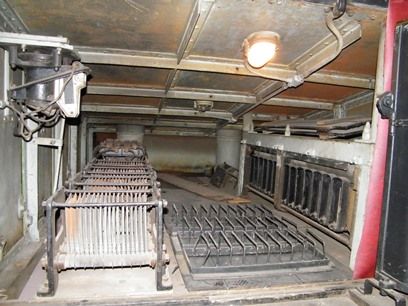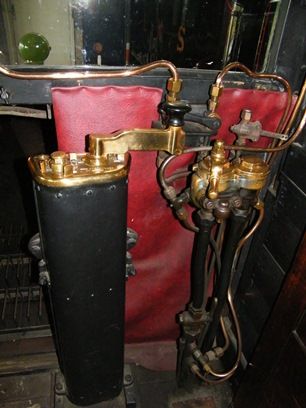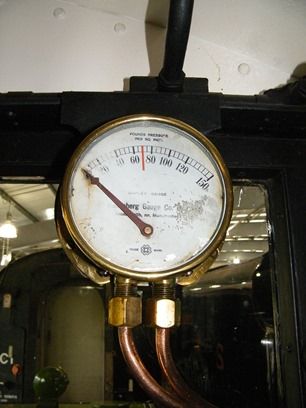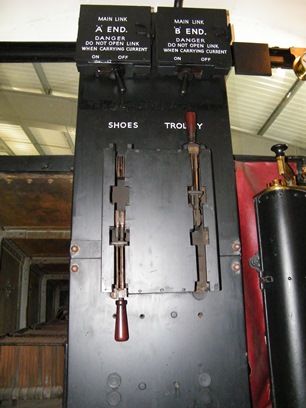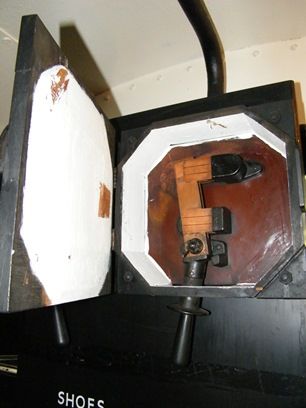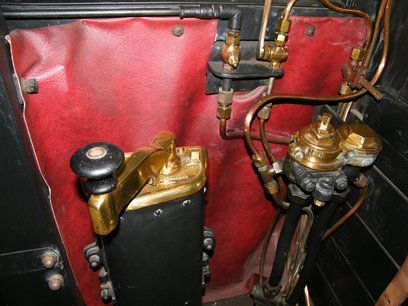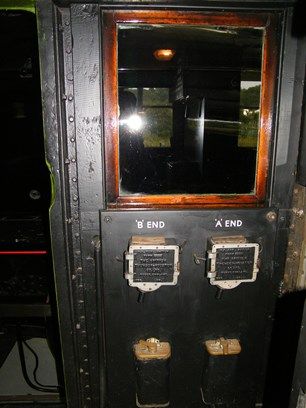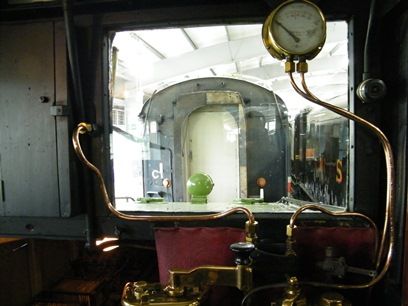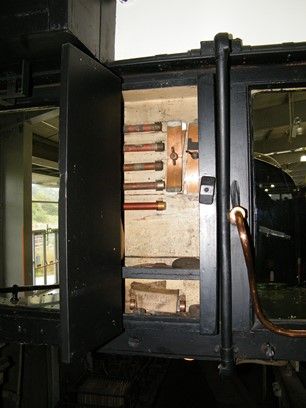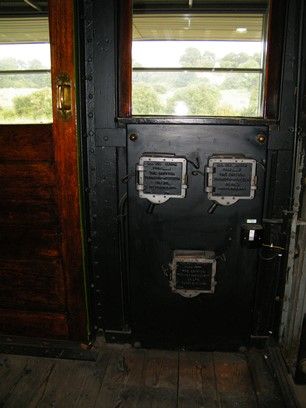This large, distinctive horse-drawn vehicle is a Pantechnicon van, which were used for transporting large, bulky objects, often used by removals firms for moving and delivering furniture. They were often drawn by two horses, and could be placed onto railway wagons to transport items over larger distances. This one is in superb original condition at the Milestones Museum, Hampshire in a typical street setting of the Edwardian era
A blog about the Edwardian era in the UK - objects, buildings, people, literature, film and all other aspects of the Edwardian era (covering 1901-1919)

Thursday, 30 May 2013
Tuesday, 28 May 2013
Crossley Stationary Engine, 1904
Built by the Crossley Brothers in Manchester in 1904, this paraffin powered stationary engine produced three brake horsepower, and would be used to power equipment such as bench saws etc. By being fitted on a simple trailer such as this it could be easily moved short distances
Sunday, 26 May 2013
Andrew Barclay 0-4-2ST Steam Locomotive No 6, 1910
This saddle tank built by Andrew Barclay of Kilmarnock in 1910 as works number 1193 has the saddle tank characteristic of most Barclay locomotives, but unusually for an industrial locomotive, has the 0-4-2 wheel arrangement, with the four driven wheels followed by a trailing, un-powered axle and wheels. The additional wheels would accommodate a longer boiler, making it more powerful. The trailing axle is now missing and some other parts, and is preserved at the Tanfield Railway in County Durham
Friday, 24 May 2013
Taskers General Purpose Steam Traction Engine, 1905
This 7hp single cylinder, two speed steam traction engine was built by Tasker and Sons (also known as Taskers) of Andover, Hampshire in 1905. It is a typical steam traction engine, and the type most seen on farms - as well as able to haul equipment, trailers etc, as the name implies it is 'general purpose' so equally at home powering equipment, used as a portable steam engine, powering threshing machines, mills and other farm equipment.
Wednesday, 22 May 2013
Avonside 0-6-0ST Steam Locomotive 'Woolmer', 1910
Built in 1910 by the Avonside Engine Company Limited of Bristol as works number 1572, this saddle tank locomotive was built for use on the Longmoor Military Railway in Hampshire - a railway built by the Royal Engineers in 1903 for their soldiers (or 'sappers', as men of the Royal Engineers are known) to learn how to construct and operate railways. It was named 'Woolmer' after one of the villages on the railway line. Although built for the military, it is a typical industrial railway locomotive of the Edwardian era
Monday, 20 May 2013
Thornycroft 10hp Car, 1903
Thornycroft had produced steam road vehicles and ships since the 1860's, and started to make internal combustion engine vehicles in 1902. They made their first car in 1903 with a small, two cylinder 10hp car, and continued to make cars until 1912 when they stopped owing to competition and concentrated on commercial vehicles. This one, engine number AZ11 and chassis number 203 was built by Thornycroft in Basingstoke, Hampshire in 1903, and was delivered to its first owner on 29th February 1904, Reverend HA Acheson-Gray, Vicar of Stoughton, Sussex. It was acquired by a Major at auction in Southsea in 1908, who after using it put it in storage in Bursledon, Hampshire until WW2 when it was kept at the Levers Garage in nearby Lower Swanwick. In around 1943 it went to the first of quite a few owners through the post-war years - after being sold at a Sotheby's auction in 1990 it went through two further change of owners that year alone. In 1993 it was up for auction again, and after it didn't sell the Hampshire Museums Service negotiated and purchased it. After a restoration using traditional techniques, including a recreation of the tonneau body it would have had when built, it went on display at the Milestones Museum, Basingstoke, and has also taken part in the London to Brighton veteran car run. For more information on it, see the webpage here - http://www3.hants.gov.uk/thornycroft/thornycroft-cars/1903-10hp-car.htm
Saturday, 18 May 2013
Brewers Dray, c1900
A John May Brewers dray decorated for the coronation of King Edward VII
This is a typical horse-drawn Brewers Dray of the Edwardian era, used for delivering barrels of beer from the brewery to local pubs. This one was built for John May's Brewery in Brook Street, Basingstoke by Trueman's, also of Basingstoke. Sometime in the 1900's it was sold off and used as a shooting brake for shooting parties on a country estate, then in 1919 bought and used for a man as temporary accommodation for him and his family whilst their house was being built. It remained on this site and, when regulations regarding caravans was changed, it was covered over by a wooden shed, and remained on this site until 1992 when a descendant of the 1919 owner contacted the Hampshire museums service, and has been conserved rather than restored, apart from the lower wheels which needed some repair where they had sunk into the ground. The original fabric was discovered under the roofing added when it was used as temporary accommodation, so what you see is fragile but highly original and on display at the Milestones Museum, Basingstoke
Thursday, 16 May 2013
Thornycroft Steam Lorry, 1902
This very nice early survivor is a typical vertical boilered steam lorry as built by Thornycroft of Basingstoke, Hampshire in the early 1900's. I don't know anything about the history of this example as there is no display board for it, but it is preserved at the Milestones Museum, Basingstoke, very close to where it was built over a century ago, in the colours of the County Borough of Bournemouth, Dorset
Tuesday, 14 May 2013
Sunbeam Patent W-metal lamp, 1910
The electric light bulb was invented by Joseph Swan in Tyneside, north east England, in 1879. It works by the electricity, when the supply has been turned on, passing through a thin filament heats it which makes it glow brightly. At first the filaments were made of carbon which made them expensive, but in around 1910 they started to be produced with a tungsten filament which made them more affordable. The chemical symbol for tungsten is W, hence it being used in the name and advertising for the new light bulbs.
Monday, 13 May 2013
Gyro-car, 1907
Designed and built by Louis Brennan in 1907, this gyro-car model was one of quite a few attempts to have a two wheeled self-stabilising vehicle, using spinning fly-wheels to keep it stabilised (this is a very basic explanation of gyrostats). The gyro-car ran on a single rail, the idea being that this would be easier to build than a traditional railway in remote areas and mountainous areas. Weight distribution was not a problem, nor was having it pushed to try and topple it over. Two full size prototypes were ran and exhibited to the public in 1910, and was later demonstrated to the War Department, as per the markings on the original model, now in the National Railway Museums' stores, which are open to the public, at York
Saturday, 11 May 2013
Robey Tandem Compound Steam Engine, 1905
This Robey Tandem Compound steam engine was one of two built in 1905 to power eight new malthouses at Sleaford, Lincolnshire, for the Bass Brewery. The other engine was the mirror image of this engine, and were housed in a central engine house, powered by a large coal fired boiler, and was used to drive a line shaft from its thirteen foot flywheel which powered hoists, pumps, screens and ventilators at the malthouses around the site. It worked at Sleaford until the site closed in 1959, and is now on display, still in working condition (but powered by a gas boiler) at the National Brewery Centre, Burton-upon-Trent
Thursday, 9 May 2013
Newcastle A Class Tram 114, 1901 - Part Two
This wonderfully restored Edwardian electric tram has featured previously on the blog here - http://electric-edwardians.blogspot.co.uk/2011/12/newcastle-class-tram-114-1901.html , however these photos show it as decorated for the 40th anniversary of the Beamish Open Air Museum's tramway operation. It is decorated with flowers similar to how many Edwardian trams were for, apparently, any occasion they could think of!
Tuesday, 7 May 2013
Narrow Boat 'Kildare', 1913
'Kildare' is a typical, unpowered narrow boat which worked the country's waterways in the late 19th and early 20th century. They were narrow enough to fit down the canals and the locks used to climb or descend terrain, and featured a long cargo area with sheeting to protect the cargo, and a small cabin at the rear where the crew and his family would live, with sleeping accommodation and small cooking facilities. It was one of twenty-four 'butty' boats, built with an iron hull, built between 1912 and 1914 for Fellows, Morton and Clayton at Hilltop, West Bromwich by Braithwaite & Kirk. 'Kildare' was registered on 10th April 1913, and would usually have been pulled by a heavy draught horse such as a shire horse - the horse would walk on the towpath alongside the canal using a rope, with tunnels and bridges often having special arrangements to allow for the horse to continue to pull them through, or use other power (often human) to propel them. With the introduction of steam, then petrol and then diesel powered narrow boats, unpowered narrow boats would be towed behind the powered narrow boats, or be tied alongside a powered narrow boat, which was both faster and also made more sense as although the powered boats were faster, the space used for the engine and fuel had an impact on the amount of cargo that would be carried, so by powering another boat it made more economic sense.
'Kildare' almost came to an end in 1940 when whilst in a wharf in Birmingham, a bomb from a German aircraft sunk it and three other narrow boats, however was refloated and repaired. In the 1970's, after being retired from working use, was used as a camping boat, still in mostly original condition but with camping facilities in the cargo hold. In 1992 'Kildare' was purchased by the Black Country Living Museum, and restored to original condition to work in conjunction with 1909 steam narrow boat 'President' featured previously on the blog. They are both seen together at canal events around the network, and in 2012 for the Queen's Diamond Jubilee, with 'President' took part in the flotilla down the River Thames. For more information on 'Kildare' and 'President', see the Friends of President website here - http://nb-president.org.uk/
Sunday, 5 May 2013
Crossley 40hp Car (Lambert & Butler Motors 13 of 25)
This is 13 of 25 in the Lambert & Butler Motors Series of Cigarette Cards, issued in 1908. From the back of the card;
"Mr Charles Jarrott on his 40hp Crossley, on which he has twice made record runs from London to Monte Carlo - in 37.5 hours in 1906, and in 35.5 hours in 1907. British made throughout, this car is famous for its silent running; and it embodies, "The good points of every car and the bad points of none"
Friday, 3 May 2013
North Eastern Railway Electric Locomotive No 1, 1904 - Part 2
The earliest main line electric locomotive to run in the UK, North Eastern Railway bo-bo Electric No 1, built for use on the Newcastle Quayside branch where it and identical No 2 served for almost sixty years, is now in preservation as part of the National Collection owing to it's importance in railway history. It has been covered before on the blog here;
However I was able to take these photographs inside the locomotive, with thanks to to Anthony Coulls at the National Railway Museum. The end with the control panel of switches running down the centre of the cab windows is 'A' end. If anyone would like larger copies of any of these please let me know and i'll e-mail them over. It struck me how similar the controls are to that of a Tram of the period.
From what i've read, the location of the controls changed since it was first built - I have no definite date for this but presume it was when the ES1s were changed from the large bow pick-up mounted on a wooden beam half way across one of the bonnets to the roof mounted pantograph before they entered service in 1905.
A end is the front, which is also the unobstructed front of the locomotive as viewed in the museum, this is the left hand side looking forwards
B end
A end
The electrical resistances in one of the noses - the interior of the other nose is identical. The two vertical cylinders at the end are the sandboxes, filled from the two noticeable circular lids on each nose
B end controls
Control panel on A end - for example in this position, the pantograph or 'trolley' is lowered, so the locomotive is not getting it's power (current) from overhead wires, and is being powered from the third electrified rail from the shoes mounted on the locomotive's wheeled bogies, which it would do during the tunnel linking Trafalgar Yard near Manors Station and the Newcastle Quayside. It would also use the third rail to transit back to it's shed
Inside the box for B end on the control panel
The handle for the pantograph - this is in the 'down' position
Interior of the box between the cab windows at B end
Subscribe to:
Posts (Atom)
